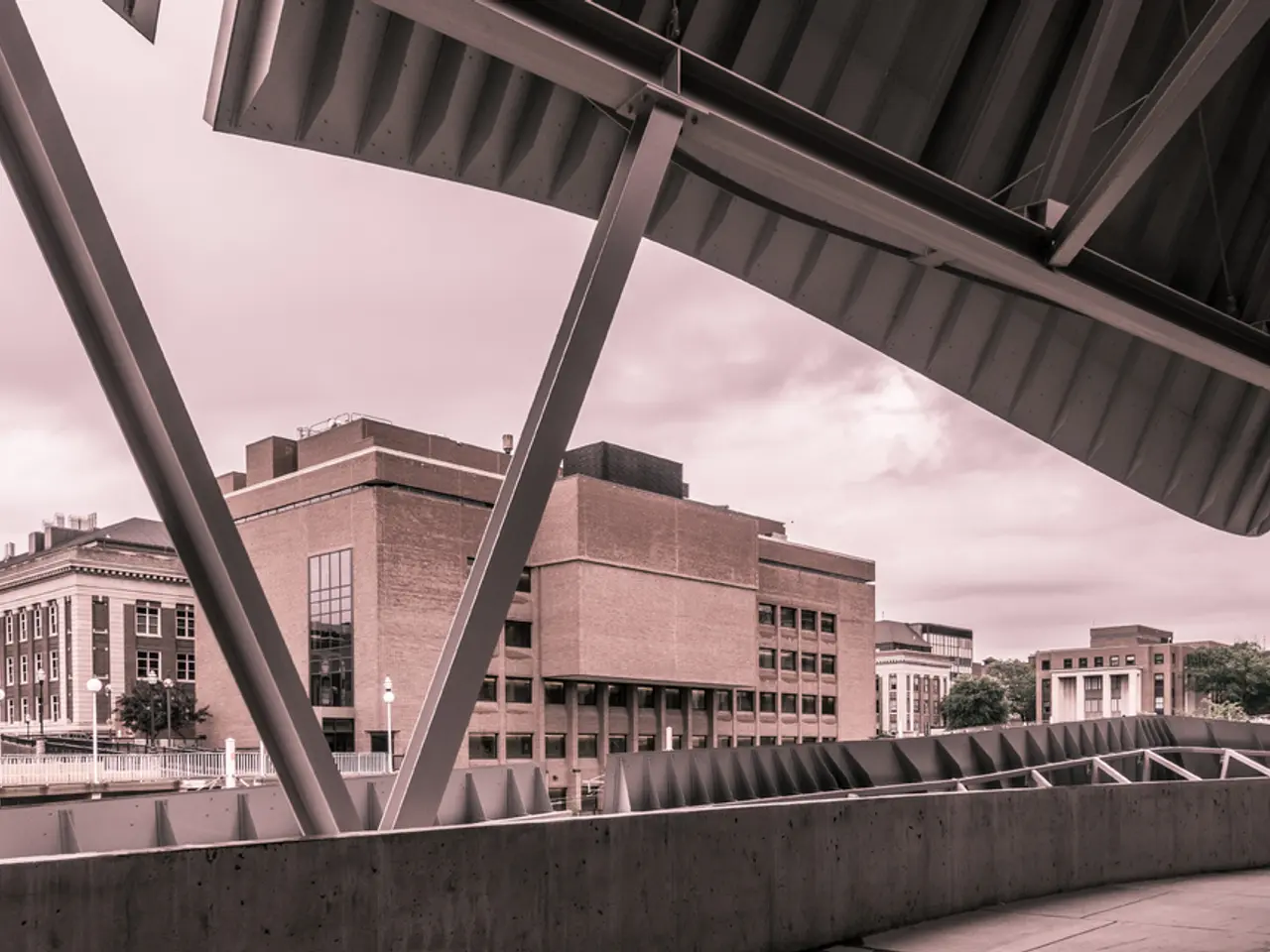Immigrant arrest tactics vary significantly between red and blue states, according to data, as reported by ICE.
In the United States, the tactics used by Immigration and Customs Enforcement (ICE) to apprehend immigrants vary significantly between Republican-leaning (red) and Democratic-leaning (blue) states. This division is primarily due to local policies and the level of cooperation between ICE and state or local law enforcement.
In Republican-leaning states, the majority of ICE arrests (about 59%) take place in prisons and jails. These arrests often target immigrants who are already in custody, with a focus on those perceived as public safety threats. This approach reflects closer coordination between ICE and local law enforcement, allowing ICE to operate within detention facilities more freely.
On the other hand, in Democratic-leaning states, around 70% of ICE arrests occur in the community - at worksites, on the streets, or during mass roundups. Many individuals arrested in these states have no criminal record, a result of sanctuary policies in Democratic-controlled states and cities, which limit or prohibit local law enforcement cooperation with ICE.
The division in arrest tactics stems from political and legal differences. Sanctuary Policies in blue states restrict local police from assisting ICE, forcing ICE agents to do more arrests independently outside detention facilities, even including people without criminal histories. In contrast, Republican-leaning states often have laws or agreements facilitating ICE access to prisons and jails, making it easier to arrest people already detained on criminal charges.
This partisan split in ICE enforcement tactics predates recent years but has widened since the previous Trump administration. The government denies the existence of explicit arrest quotas, emphasizing enforcement based on individualized assessments, though political rhetoric has suggested aggressive targets in the past.
In New York, which has sanctuary policies, only 4% of the immigrants that ICE had requested detainers for were arrested in prisons and jails. Conversely, in states that voted for President Donald Trump, ICE is more likely to arrest immigrants directly from prisons and jails. For instance, in Mississippi, where sanctuary policies are banned, 87% of immigrants ICE filed a detainer request for through the end of May were later arrested in prisons and jails.
In Massachusetts, 94% of immigrants arrested by ICE were apprehended in the community, and 78% of them had no criminal record. This has led to concerns among local advocates, who claim that stepped-up community arrests in immigrant-heavy neighborhoods are having a marked impact. Businesses in some of these neighborhoods are suffering because people don't want to leave home, according to Sarang Sekhavat, the chief of staff at the Massachusetts Immigrant & Refugee Advocacy Coalition.
The aggressive tactics used by ICE in Massachusetts have been defined by "a general level of mean-spiritedness and brutality," according to Daniel Kanstroom, a Boston College law professor. ICE carried out what officials described as the largest enforcement operation in the agency's history, arresting more than 1,400 people in communities across Massachusetts.
One such individual was Geovani Esau De La Cruz Catalan, a 20-year-old immigrant from Guatemala with no criminal history, who was arrested by immigration agents on the street outside his Chelsea home in June. Mayra Balderas, the American citizen stepmother of De La Cruz, said ICE agents were frequently patrolling her Chelsea neighborhood, something she'd never seen before Trump took office.
Under President Joe Biden, about 62% of ICE arrests were from prisons and jails, while 27% were in the community. However, the divide in ICE's arrest strategies remains, with 59% of arrests in red states taking place in prisons and jails, while 70% of arrests in blue states take place in the community. This clear division in ICE's apprehension strategies continues to shape the immigration landscape across the United States.
[1] Migration Policy Institute, "ICE Arrests in the Interior: Trends and Drivers," 2020. [2] American Immigration Council, "Sanctuary Policies: A Primer," 2021. [3] The Marshall Project, "ICE Arrests in Red and Blue States," 2019. [4] The Washington Post, "ICE's Quotas: The Truth," 2019. [5] The New Yorker, "The Trump Administration's Immigration Crackdown," 2018.
In Republican-leaning states, the focus of ICE arrests is primarily on immigrants in prisons and jails, with a emphasis on those perceived as public safety threats, due to closer coordination with local law enforcement. Conversely, in Democratic-leaning states, a significant number of ICE arrests occur in the community, with many individuals having no criminal record, a result of sanctuary policies in Democratic-controlled states and cities.
These differences in ICE enforcement tactics are largely influenced by political and legal factors, as sanctuary policies in blue states limit local police assistance to ICE, forcing ICE agents to conduct more arrests independently in the community. In contrast, Republican-leaning states have laws or agreements facilitating ICE access to prisons and jails, enabling more arrests of immigrants already detained on criminal charges.







